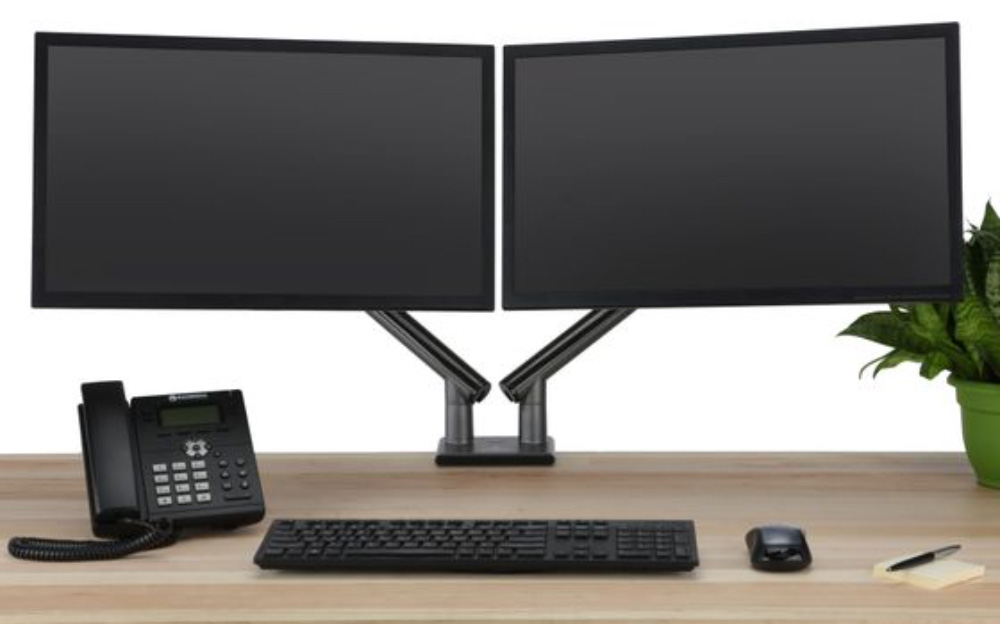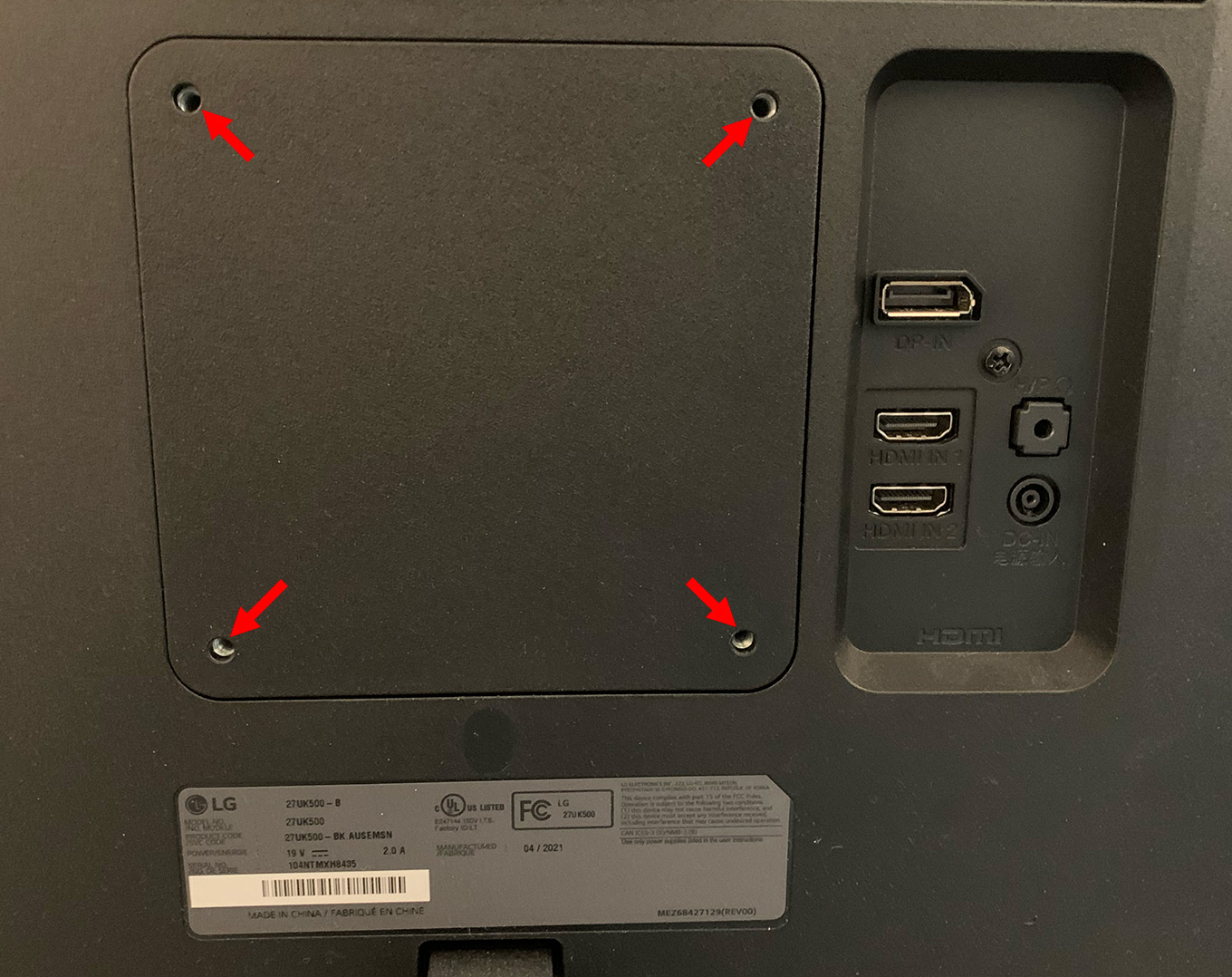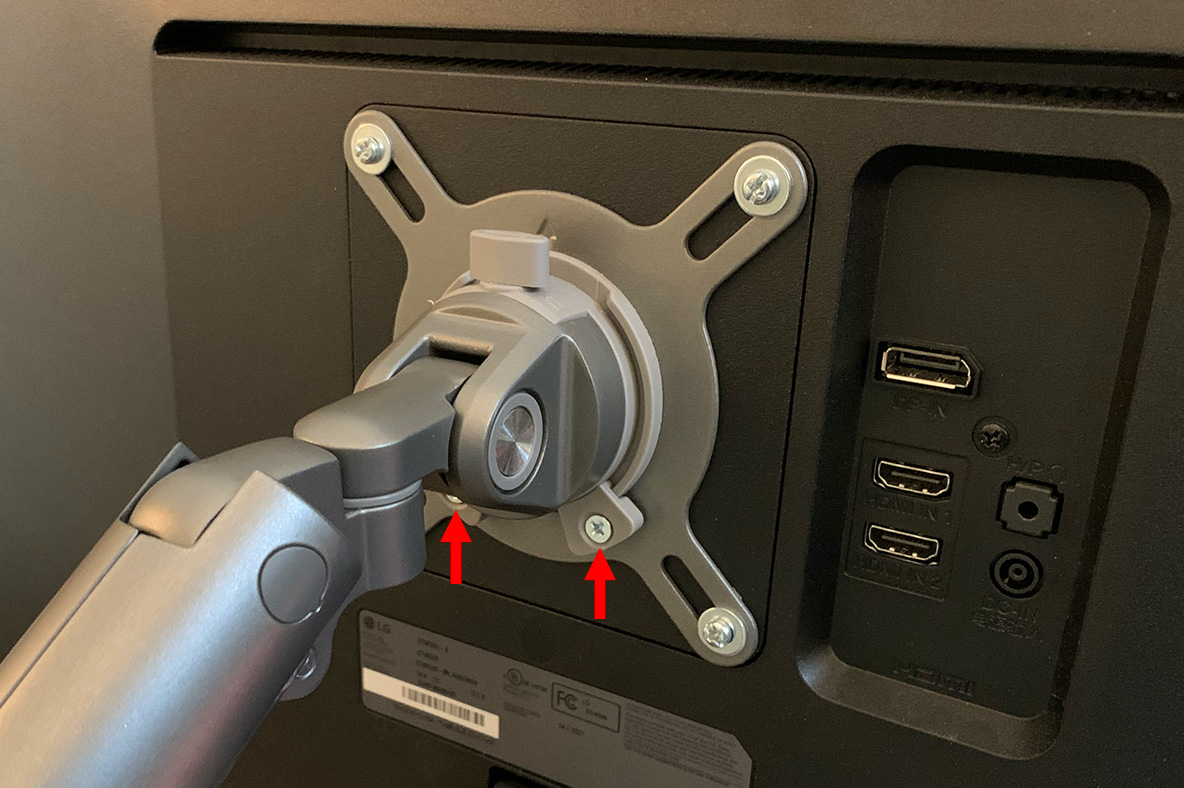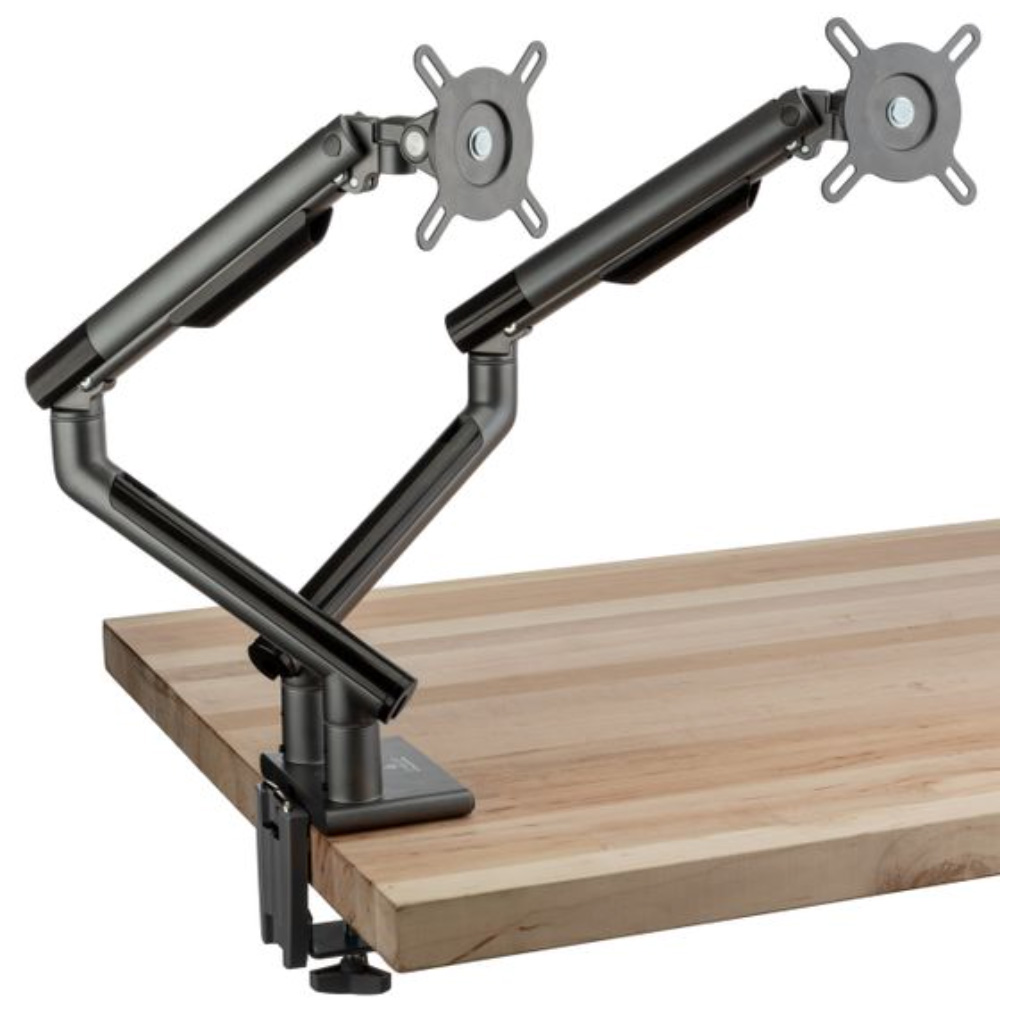 [ Read my product disclosure statement here.]
[ Read my product disclosure statement here.]
Not surprising, if you’ve seen my office, I recently ran out of desk space. So I purchased the Levitouch Dual-Arm Monitor Mount from Gabor to get more desk space by removing two large monitor stands. The Levitouch supports two monitors and moves each in four axes: rotation, tilt, swivel and pivot.
Here’s my review.
EXECUTIVE SUMMARY

I came late to the VESA party, so this is my first VESA mount. I discovered that I like this Levitouch from Gabor a lot. It is solidly built, easy to assemble… ahem, if you read all the directions before you start – and supports two computer monitors from 17 – 32″ and up to 19.8 pounds each.
NOTE: VESA (Video Electronics Standards Association) standards are measurements for the distance between mounting holes at the back of flat-screen TVs, monitors, and other flat-panel displays. There are three standards: 75 x 75 mm, 100 x 100mm and 200 x 200 mm, however following the VESA mounting standards is voluntary for manufacturers.
Assembly takes about fifteen minutes and uses industry-standard VESA mounts and bolts, which are supplied. Monitors can be moved up or down, pivoted left or right, tilted up or down and rotated from horizontal to vertical.
It can be attached to a desk via a clamp (more on that below), an existing cable port in the desktop or drilling a small, 3/8″ (10mm) hole to mount the main support plate to the desktop.
The monitor support arms include adjustable spring-steel tensions, so that monitors will move easily and stay put once you stop pushing. Each arm is independently adjustable, so your monitors don’t need to match for size, weight, or orientation.

The mounts support:
I’ve only owned this device for a couple of days, but I am already enjoying more desk space, better monitor positioning and the security of knowing these supports will last for a long, long time.
If you are looking to add positioning flexibility to a dual-monitor setup, I highly recommend the Levitouch Dual-Arm Monitor Mount from Gabor.
Manufacturer: Gabor
Product: DM-552 Levitouch Dual-Arm Monitor Mount
Website: DM-552 Dual Monitor Mount
Price: $142.99 (US) ($110 at B&H)
NOTE: Here’s the single arm version, also available at a discount through B&H.
PACKAGING

The unit arrives nicely packed in cardboard, with all pieces wrapped and labeled in plastic bags.
What I especially liked was the quality of the assembly instructions. Clear drawings, readable English and mostly accurate.
NOTE: These instructions referred to the VESA plate being separate from the mounting bracket but, for this model, they are attached.
Assembly is easy – but, I made the mistake of assembling this without reading the directions. No harm was caused, but I wasted ten minutes because I was too proud to actually read the directions before I started. When you do, the directions are clear and easy to follow. You’ll need a Phillips screwdriver.
ASSEMBLY

The KEY decision you need to make is whether to clamp it to your desk, or drill a small 3/8″ hole in your desktop to mount it using a grommet. (Gabor supplies mounting hardware for both in the box.)
As the screen shot above shows, you need a minimum of 1.5″ for the clamp to be securely attached to your desk. The ideal amount is 2.5″. For my “test desk,” I only had a one inch overhang and, while that was enough to take photos, it is not enough for actual use. The desk I will be using has 6″ of overhang, so I’m fine. But, if you only have an inch, as my test desk does, you’ll need to drill a hole in the desktop to make this safe and secure.

Once the clamp is secure, you’ll add two swivel arms, then two more arms that actually hold the monitor. These are made out of steel and feel very solid and well-built.
Each monitor arm holds a steel spring whose tension is adjustable to compensate for the weight of each monitor. Each arm is individually adjustable for tension and position.

The back of virtually every computer monitor and TV made for the last decade or so has bolt holes for a VESA mount. The Levitouch supports both 75 x 75 and 100 x 100 spacings.

Bolts to attach the mount to the monitor are supplied. Another nice feature is that monitors can be quickly released from the arms, simply by twisting the thumb knob at the top of the mount. The two screws (red arrows) adjust rotation tension. As shipped, these are too tight to rotate the monitor and need to be loosened.
NOTE: Another benefit to the “quick-release” thumb lock at the top is that it is very easy to remove or replace a monitor without having to undo any of the mount from the desktop. As someone who likes to test different monitors, I like this feature a lot.

Cable runs are built into the unit for both power and data. As well, the base plate has slots to hold the two hex (Allen) wrenches.
OPERATION

Once everything is set up and monitors are attached – again, the whole process took me 15 minutes – the last adjustment you need to make is tweaking the spring tension adjustments so that the monitor doesn’t move once you set it into position.
This involves twisting a bolt with a (supplied) Allen wrench until the monitor moves easily in all directions. There’s an indicator on the spring showing how much tension is applied.
NOTE: There’s also a set screw in the base to prevent it from swiveling so far that the monitor bangs into the wall.
Once this tension adjustment is made, you are good to go. No additional maintenance is required unless you change monitors and need to rebalance the springs.
As I get ready to put this dual monitor mounting system into production, I find myself getting excited about how this offers the opportunity combine both horizontal and vertical monitor layouts and vary them on a whim. For example, I could display the file list (Browser or Project Monitor) on a vertical monitor, while editing on a horizontal monitor. I suspect I’ll play with this feature more than I expect.
SUMMARY

Clearly, if you only need to support one monitor, this unit is more than you need. However, Gabor makes a variety of monitor mounts and, if they are all as well built as this, you have a variety of excellent choices.
I find the positioning flexibility of these mounts opens my imagination to the creative freedom and efficiency of varying monitor position and orientation. For example, a vertical monitor may be preferable for writing, spreadsheets, lists; even audio mixing and editing vertical video for social media. A horizontal monitor may be preferable for traditional video editing and slide presentations. The ability to alter monitor position and orientation quickly and easily is an option I’ve never had before.
I’m truly impressed with how well-built and flexible these are. I’m also impressed by the thoughtfulness of the design. Little things like places to store tools, a set screw to limit hitting the monitor against the wall, built-in cable runs, the ease of adjusting spring tension and four axes of rotation come immediately to mind.
Now that my photos are done for this review, I can move all the stuff off my main desk and get these permanently installed. I’m looking forward to using these Gabor Monitor Mounts for years to come.
One Response to Review: Levitouch Dual Arm Monitor Mount by Gabor
[…] 详情参考 […]